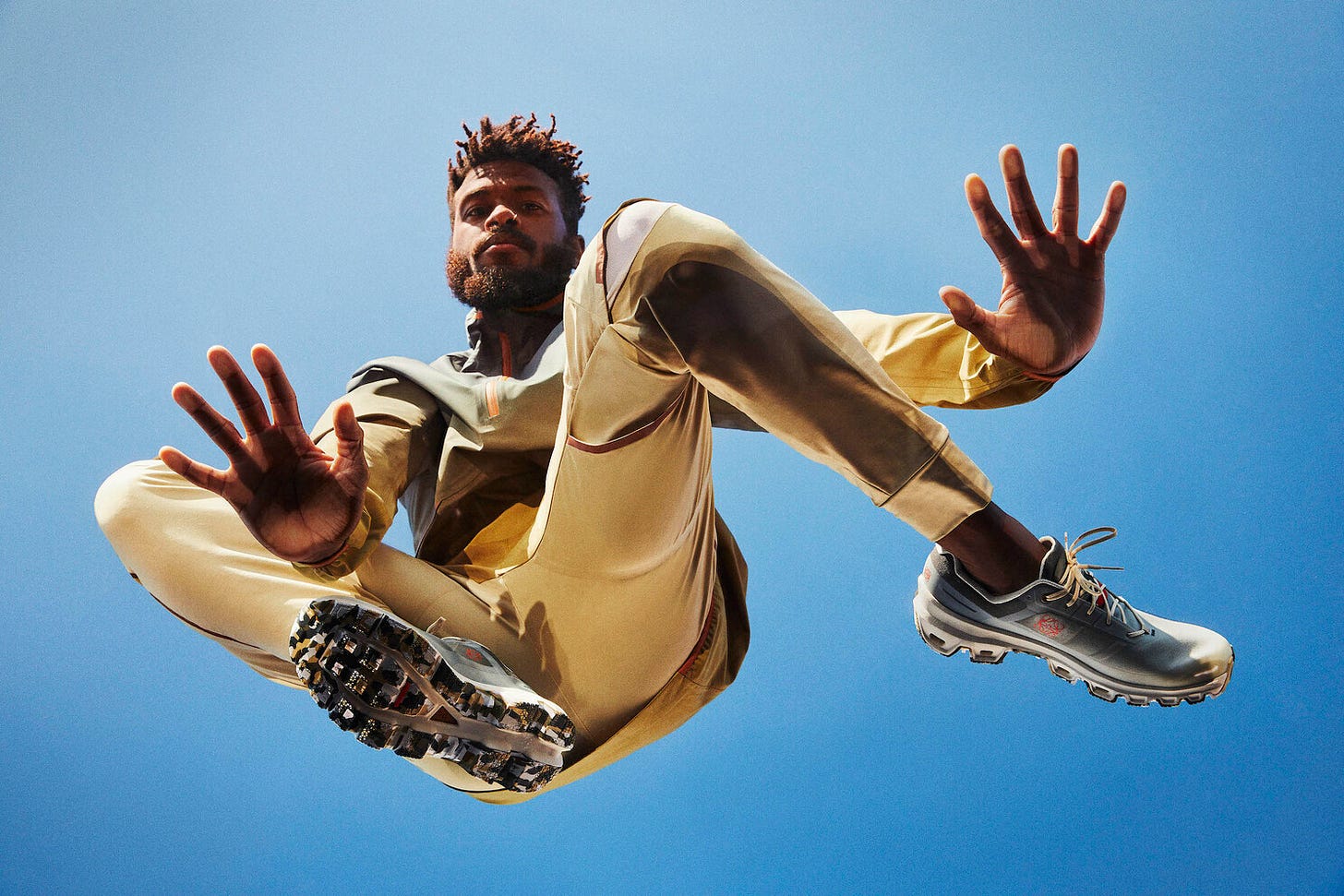Running is a funny one. As a high-profile sport, it never captured the glamour of other team-based sports. As the RHOC Substack puts it:
“Perhaps it was seen as too simple or uninvestable. No runner celebrities were driving fast cars, Paula Radcliffe didn’t have her own clothing line or perfume brand…it was all a bit ‘What I Talk About When I Talk About Running’, shitting yourself on a cobbled street in Barcelona, Casio stopwatches and boney elbows. But recently, that perception has flipped… Running is COOL now.”
And dare I add, the culture of run clubs and the proliferation of marathon weeks makes it trendy? Blokecore, a trend that surfaced last year around football culture, has been replaced by track and field summer. We’re trading our vintage football jerseys for Alphafly 3s, ON x Loewe, and Strava.
Running is no longer just about personal bests or calorie burning; it’s become a social event, with interest-based run clubs surfacing around city centres, and running kit becoming the new streetwear. Even marathons, a previous feat of individual achievement, have become more akin to a fashion week or a festival. As this Financial Times article states, “the festivalisation of running has turned race day into ‘race week.”’ Marathon weeks are now filled with an array of activities - breakfast runs, panel talks, and DJ nights. Brands are capitalising on this festive atmosphere, imbuing the community and cultural aspects that festivals have into running, thus turning it from an individual achievement to a community event. For instance, at the Paris marathon, Satisfy hosted T-shirt customization workshops, while Asics organised 5k and 10k races. New Balance's invite-only boat party on the Thames and their collaboration with rapper Loyle Carner at a London gig exemplify how marathons have become week-long celebrations of community and lifestyle.
These brands above have benefitted from the running’s creative renaissance, where even the beginners are scrambling to get their hands on the latest shoe drop. In a world where ‘drops and pop ups’ were reserved for streetwear royalty (I remember the queues of trend-focussed kids outside of Supreme in 2016!!!), now niche running brands are finding their own footing in the cultural world of running. As this AColorBright report states, over ten years ago the ‘fashion’ behind running was reserved for the leaders of the sports world. Nike, Adidas and New Balance were the practical places to buy running shoes. And while always delivering in quality, perhaps 10 years ago they didn’t quite garner the hype that, say, Jordans did. But the introduction of challenger brand, On, with a focus on sleek running styles and heralding kit meant for running changed the game. This gave way to an explosion of coveted, elevated running gear brands, each crafting distinct identities and identifying with different cultural niches, and now all doing ‘drops’ the same way streetwear did over a decade ago. The modern runner’s kit has become a badge of honour, and brands like District Vision, Soar, and Satisfy are elevating running gear with high-end design and unique aesthetics.
But it’s not just about kit and marathons, what’s really elevated running’s social cache is the spirit of ‘run-clubs’ that has surfaced. New run clubs are providing a social outlet that contrasts sharply with traditional, competitive running clubs (that were solely performance-focussed and exclusive). This approach has attracted a diverse range of participants, including women under 25 who are now the fastest-growing demographic on Strava. Pubs are expensive, cafes kick you out after a £4.50 flat white, parks in English weather are unreliable, and people feel lost without a third space outside of their home and work. Run clubs are affordable, accessible and a place to feel a sense of belonging. They’re also dating spaces, which is becoming increasingly appealing as people are becoming disenfranchised with apps and more interested in meeting people IRL. And, as Lydia Douglas of RBC highlights, running clubs offer a way to meet and hang out without a reliance on alcohol, which is becoming increasingly important, particularly for Gen-Z.
Running is no longer just about personal bests or calorie burning; it’s become a social event.
It’s important to note that none of this would really be possible without honouring the OG form of it: Run Dem Crew, who back in 2007 democratised running and instilling their core rules: WE ARE NOT A RUNNING CLUB. LEAVE YOUR EGO AT HOME. The first community-based running group of its kind, Run Dem Crew became a home to hundreds of people, a place to find connection in an increasingly isolating world.
Running’s cultural resurgence embodies a move towards authenticity, community, and accessible fitness. It’s a trend that embraces the spirit of streetwear while fostering a sense of belonging and collective celebration. As we lace up our running shoes, we’re not just hitting the pavement—we’re joining a movement that’s redefining what it means to run.






